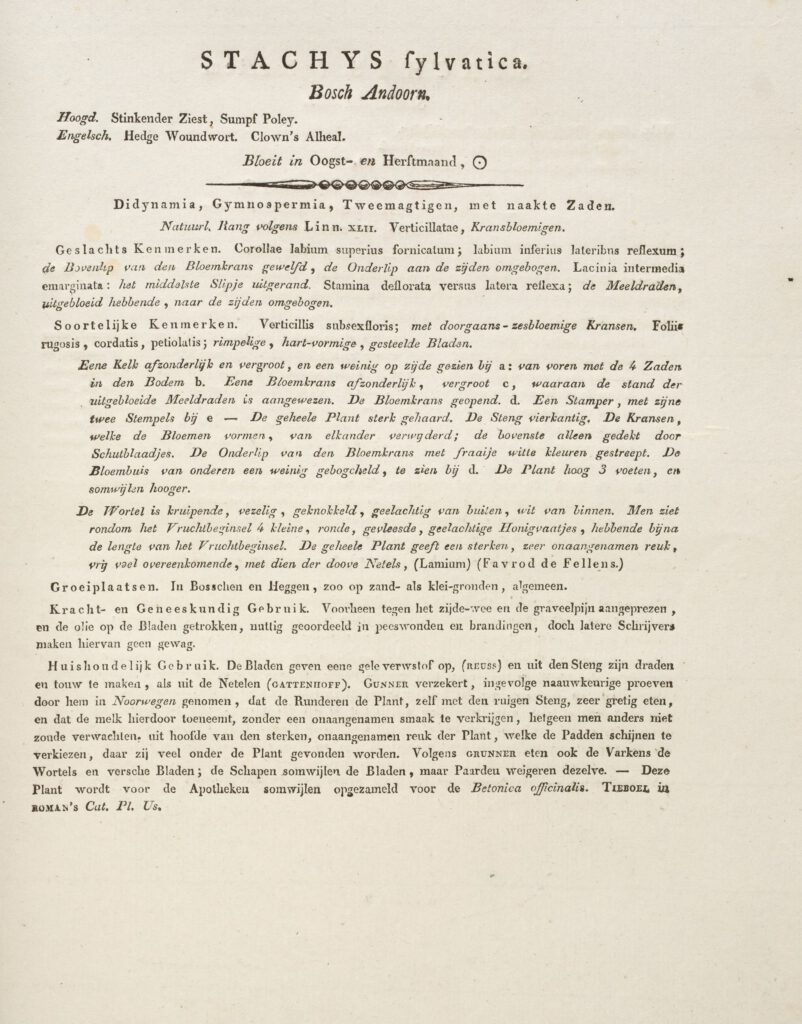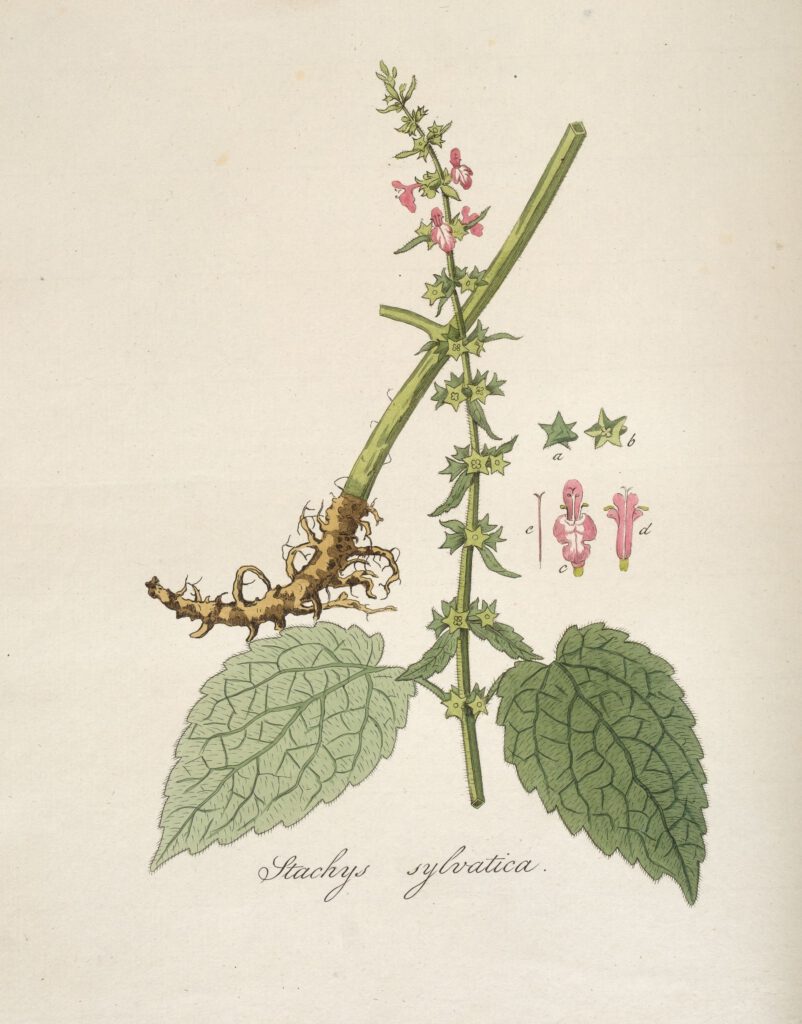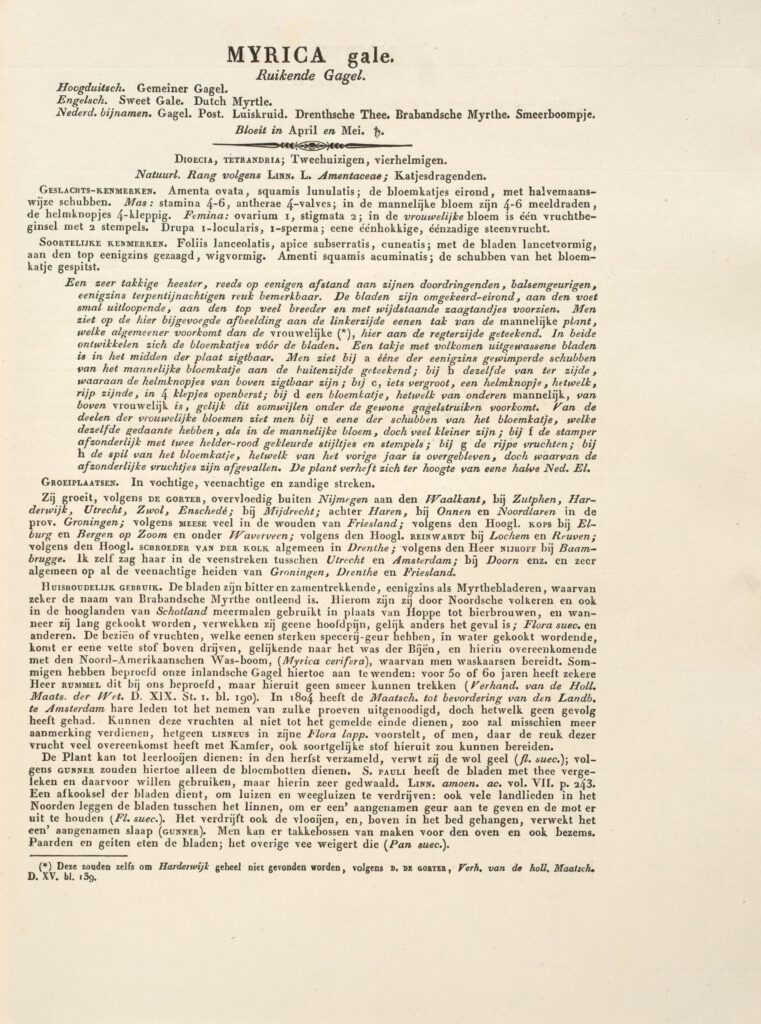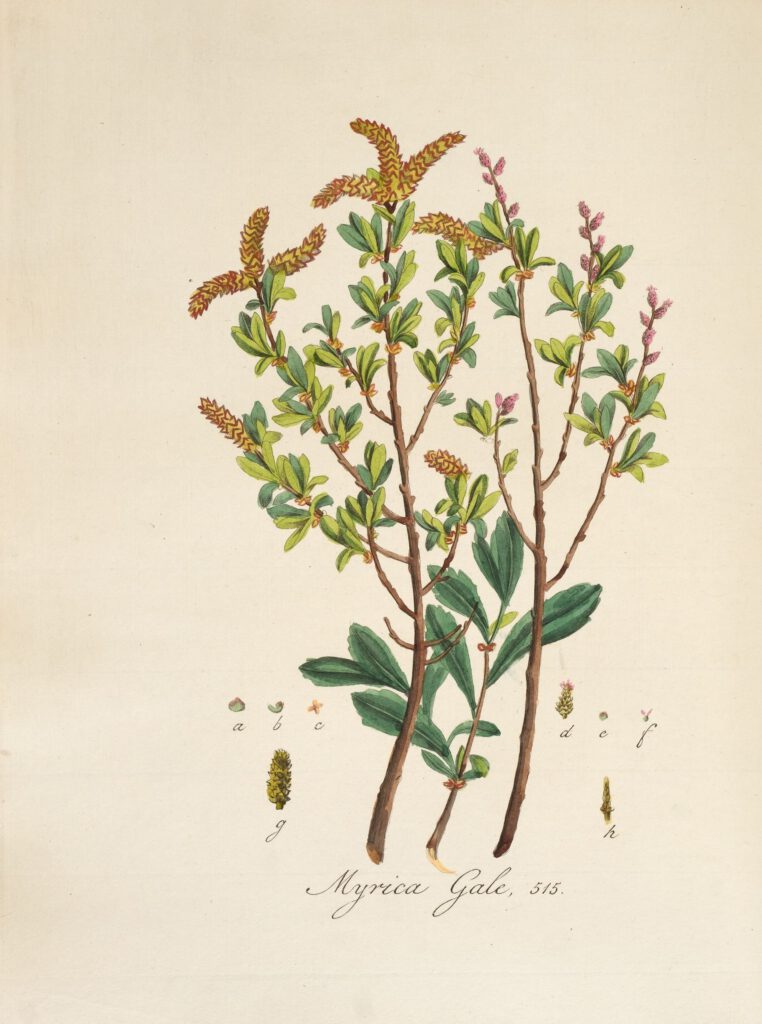Plant names and descriptions
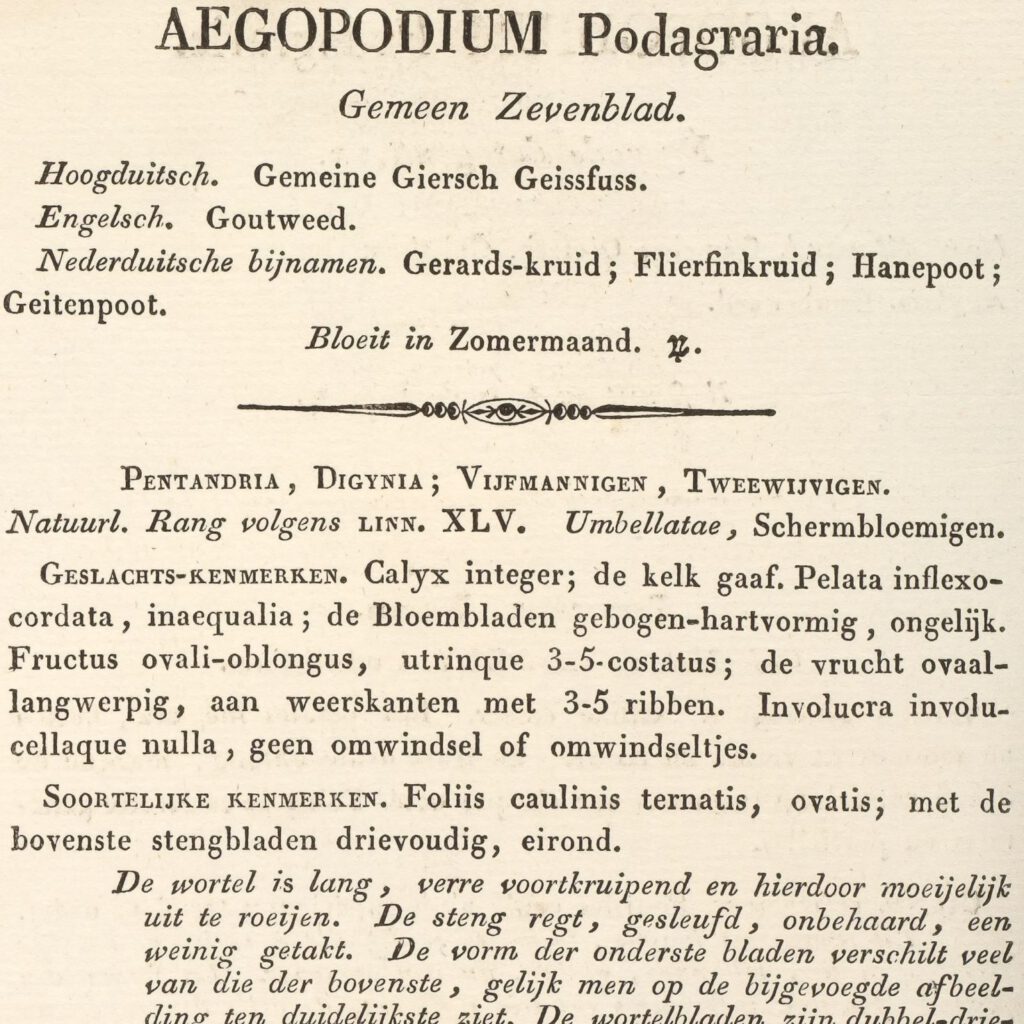
The plants in the Flora Batava are described according to the system of Linnaeus. He described the rules for this system in Species Plantarum (1753). In the Plantarum Linneaus divided the vegetable kingdom into 24 classes, based on their reproductive organs. The system is based on the number and arrangement of male (stamens) and female (pistils) organs.
According to Linnaeus’ system, all plant names consist of two parts (binomial nomenclature): a genus name and a second term. Together, these uniquely identify each species of organism.
The order in which plants appeared the Flora Batava was not scientifically based. The plants in the Flora Batava were drawn from life. As such, the sequence in which the different plants were described and included in the series depended on the availability of the plant, for example, when they were found.
Since the plants were all named according to Linnaeus’ binomial naming system and the series was published in single installments, readers could apply a scientific order themselves.
The descriptions contain a lot of interesting facts about the plants. First the name is stated in Latin, Dutch, German and English. Sometimes folk names are added. Then the flowering time, characteristics and varieties of the plant itself are mentioned, together with a list of similar looking plants. An accurate indication of where the plant was observed is always given, which can be of great value for contemporary biodiversity research. Information about the practical applications of the plants is also included, such as the use as medicine, pigment, food, fodder and fertilizer. Knowledge that has sometimes been long forgotten. Although the information about the practical applications disappeared in later editions, this topic can still be an important source for stories that still inspire and enthuse plant lovers of today.
Myrica gale, in Dutch Ruikende Gagel, was also called Luiskruid, due to the fact that a decoction of the leaves was used to expel aphids.
Stachys sylvatica, Bosch Andoorn / Hedge Woundwort or Clown’s Alheal, which leaves also were used to produce a dye, this time a yellow one. The leaves had also a medical use, soaked in oil they provided healing for wounds and burns. Hence the English name Woundwort?
